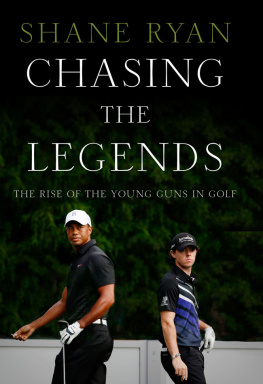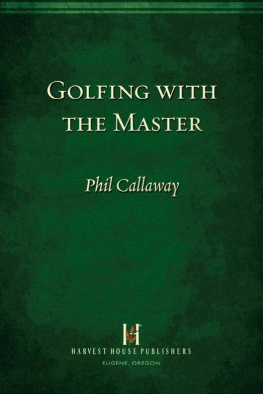CHASING
THE
LEGENDS
First published in Great Britain
in 2015 by Aurum Press Ltd
74-77 White Lion Street
London N1 9PF
www.aurumpress.co.uk
Published in the United States by Ballantine Books, an imprint of Random House, a division of Penguin Random House LLC, New York.
Copyright Shane Ryan 2015
Shane Ryan has asserted his moral rights to be identified as the Author of this Work in accordance with the Copyright Designs and Patents Act 1988.
All rights reserved. No part of this book may be reproduced or utilised in any form or by any means, electronic or mechanical, including photocopying, recording or by any information storage or retrieval system, without permission in writing from Aurum Press Ltd.
Every effort has been made to contact the copyright holders of material in this book. However, where an omission has occurred, the publisher will gladly include acknowledgement in any future edition.
A catalogue record for this book is available from the British Library.
ISBN 978 1 78131 329 9
eBook ISBN 978 1 78131 475 3
1 3 5 7 9 10 8 6 4 2
2015 2017 2019 2018 2016
eBook conversion by CPI Group, Croydon, CR0 4YY
CONTENTS
TO EMILY
Often people say, what is it that makes a champion? Its an accumulation of many things. Talent? Its something more than talent. It just doesnt happen. Its hard work. Its a work ethic, its a big sacrifice. Patience is a big thing. Youve got to have great nerves. Its a puzzle, with many little things in ita....
The other thing is if we all knew, everybody would be a champion. Theres something called it that nobody yet has been able to describe.
GARY PLAYER
My year on the PGA Tour began on Georgias barrier islands, in November of 2013, at the Sea Island Golf Cluba course built on the salt marshes near an old antebellum plantation, full of stately live oaks and Spanish moss. There, I watched twenty-eight-year-old Chris Kirk navigate a tense Sunday to win the McGladrey Classic. The man he beat on the final hole, forty-one-year-old Briny Baird, held the bittersweet distinction of leading the PGA Tour career money list among players who had never won an event, and that day likely represented his last real chance to hold a trophy.
At the time, Kirks victory gave me a sense of optimism for this book. I had a theory: The 2014 season, which began in the fall, would bring a generational shift in professional golf. The old starsincluding Tiger Woodswould fade, and a new class would emerge. It would be a year, I thought, that would change the face of the sport. Watching an up-and-comer like Kirk beat a veteran like Baird seemed like a positive sign: I was onto something.
Of course, that hope existed beside fear: What if the old guard made a glorious last stand? What if Tiger won two majors, Phil Mickelson and Jim Furyk won the others, and Ernie Els won the Players Championship and the FedEx Cup? The whole project would be ruined, and Id look back at Kirks victory in Georgia with bitternessa sunny day in a year of rain.
Over the next year, I embarked on a journey that took me to thirty tournaments, including all four majors and the Ryder Cup. I drove when I couldup and down the beautiful Pacific Coast highway in California, over the Colorado River and into Arizonas stark Sonoran Desert, through congested Florida resort towns, from rust-belt Ohio to sweltering Kentucky, across the deep south from Augusta to Hilton Head to the sand hills of North Carolina, west through the primordial Louisiana bayous, and into the heart of Texasand flew when I couldnt, to Liverpool and finally to Scotland, where golf was born and the season concluded.
Throughout my travels, I made it my goal to learnto really learneverything I could about the rising generation. Writers and broadcasters have made a habit of treating golf like a religion, complete with sacred grounds and mythical heroes. They may be right about the sports beauty and history, but I knew from the start that they were wrong about the people. Professional golfers are human beings, with all the vulnerabilities and flaws that come with the title. I knew that what happened to them on the coursesuccesses and failures alikewas a result of who they were off the course. I needed to know where they came from, what motivated them, and how they behaved when the red light of the TV cameras went black.
This book is a subjective account of what I saw that yearjournalism mixed with opinion. Everything you will read is colored by my personal experience, and if that style offends youas it seems, at times, to have offended the sports traditionalistsat least you can consider yourself warned.
As for those young golfers, I found them to be as diverse and interesting as youd expect from a group of men on the threshold of greatness. Some of them fascinated me, some amused me, and a few were little more than overgrown children. Discerning their true natures was often difficult, because rich athletes today travel with entourages designed to protect them from people like me. I began to feel like a spy, infiltrating layers of agents and coaches and caddies, hoping to smuggle a bit of truth. Where I found that truth, Ive presented it without garnish; I never wanted to make a hero or a demon out of anyone, only to be honest.
By midsummer, one anxiety disappeared for good. My theory about the rise of the young stars had come truethey were winning in droves, from the small tournaments to the majors. With a speed and urgency that I wouldnt have imagined in my most hopeful hours, they began to claim the sport as their own.
With each success, they struck a blow against the icon that had dominated golf for two decades, and whose legend threatened to overshadow it for two more. With each victory, and each rebel yell, they were slaying the Tiger.

V ictor Dubuisson opened his eyes on that November morning in Antalya, Turkeymore than a thousand miles southeast of his childhood home in France, but on the coast of the same Mediterranean Seahoping for a career-changing victory. He rose in obscurity, ignorant of the season that awaited himhow hed be shoved onto the biggest stages, paired with giants, and asked not just to walk alongside them, but to win. Ignorant, too, of how the next twenty-four hours would foreshadow the coming year, when a talented generation that had grown sick of waiting drove the sport madly into its new era.
Only the most intense American golf junkies had ever heard his name, and even they couldnt predict what his day would hold. The anonymous Frenchman, holding the first fifty-four-hole lead of his careera significant five-shot advantagewas up against the likes of Ian Poulter, Justin Rose, and his idol: the man who had supposedly inspired his love of golf in 1997 with one of the most historic wins in the history of the sport; the man who became golfs foremost icon, and the high tide on which golf had soared for more than a decade; the one who cast a shadow over the game, even when he was hobbled, even when he was absent; the man who would be chasing the young Frenchman on the final dayTiger Woods.
I didnt know Victor yet, and I couldnt guess how his story would come to fascinate me in 2014. To call the quiet Frenchman inscrutable would be underselling the pointthe man was a sphinx, and arranging the puzzle pieces of his life would prove to be a huge challenge. Information of any kind was hard to come by, and on the rare occasions when an interesting nugget slipped through the cracks, you couldnt trust it. Every quote, and every biographical detail, only deepened the mystery.









